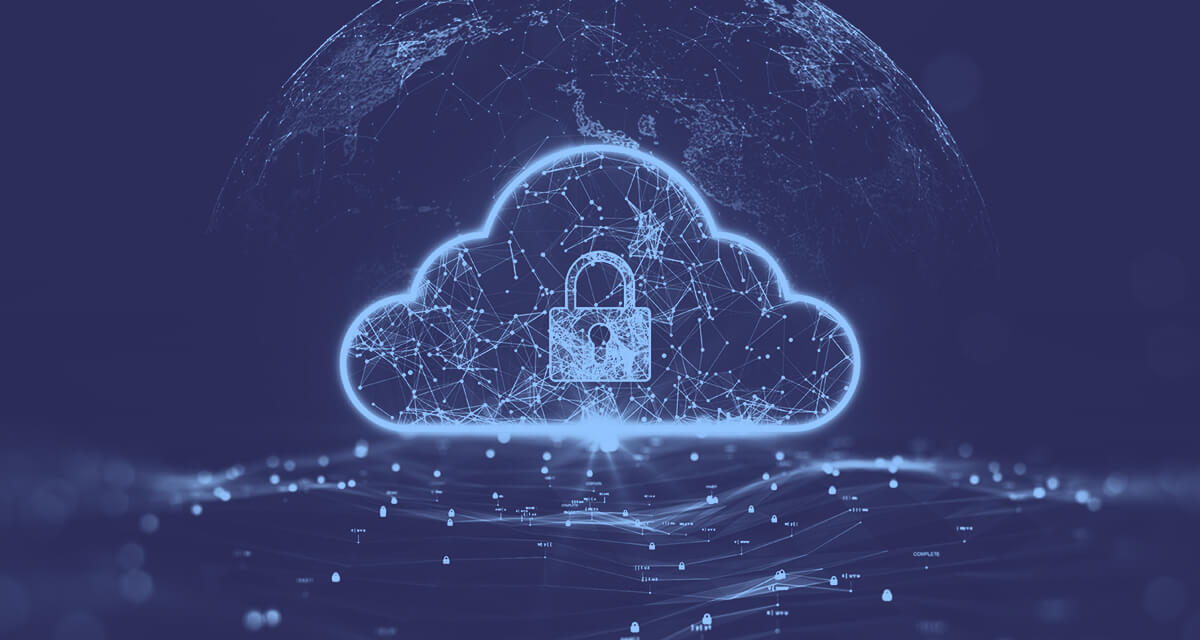

Ransomware, malicious software, is the most common threat in the digital security environment. Ransomware attacks are becoming more prevalent as threat actors find new ways to profit from them.
As the capacity to execute efficient spying could be vital to the success of any ransomware activity, threat actors will organize their cyberattacks with caution and persistence and attack under ideal circumstances. The DarkSide gang illustrates curiosity regarding the extensive investigation needed to identify a target.
Hackers utilize the recent DarkSide ransomware strain to attack numerous large, high-profile enterprises. It encrypts and steals sensitive data and sends a ransom note to render it freely accessible if the imposition is not met.
DarkSide ransomware gang targets businesses worldwide. It was first identified in July 2020.
The DarkSide ransomware operators claim to target high-revenue, large corporations that can pay large sums in exchange for system decryption. They stated that schools, hospitals, governments, and non-profits would not be their victims.
The attack vectors that DarkSide ransomware hackers employ include Privilege Escalation, Impair Defenses, and Initial Access via Exploiting Public-Facing Applications (like RDP).
The DarkSide team possesses Linux and Windows toolkits. Its affiliate program pays approx. 10%-25% of the proceeds to entities preferring to aid in transmitting their ransomware, like REvil and NetWalker. DarkSide’s ransomware code resembles REvil software’s ransomware code.
DarkSide ransomware exploits vulnerabilities like CVE-2019-5544 and CVE-2020-3992. Although these vulnerabilities have freely accessible protections, cyber attackers focus on companies running an unencrypted or outdated operating system or software. When DarkSide ransomware encrypts files, it gives each target a unique file extension and ransom message.
DarkSide uses a Ransomware-as-a-Service provider (RaaS). Different organizations probably affiliate with the group to devise ransomware attacks. The DarkSide attackers self-acknowledge that they purchase business network access, as they do not know about obtaining access. Despite using RaaS, the gang has expertise from other financially lucrative cyberattack campaigns.
A DarkSide affiliate can use DarkSide’s RaaS (Ransomware-as-a-Service) in exchange for a revenue cut. The DarkSide ransomware gang uses a sophisticated economic strategy. This sophisticated ransomware attacks high-profile organizations and monetizes hacked network assets (like the ones using double extortion linking file encryption with data theft).
Additionally, multiple gangs collectively execute advanced ransomware operations and share the proceeds. The ransom payments that DarkSide threat actors receive are split among the affiliated groups granting businesses access. The DarkSide ransomware group offers them about 25% of the total sum. These threats may resemble advanced persistent threat (APT) attacks compared to conventional ransomware incidents.
The DarkSide attacks reveal a detailed knowledge of the targets’ critical infrastructure, security measures, and weaknesses. After a detailed study of a few of their attacks, the FBI has established that the DarkSide hacktivist gang might be based in Eastern Europe.
An overview of DarkSide’s documented activities is shown below:
After this assault, DarkSide declared itself politically neutral and began assessing its victims.
Primarily, the DarkSide ransomware attack operations were distinguished for employing covert tactics. The group conducted thorough investigations and practiced precautions to ascertain that their exploitation techniques and tools would go undetected on surveilled endpoints and devices.
Although its access points differ initially, upon gaining initial access, its methods become highly systematic, making its eventual goal ruthlessly effective.
Some covert strategies are:
The conclusive steps of the attack cycle included:
The following are DarkSide ransomware attack tools and techniques:
For gaining initial access, the DarkSide ransomware employs brute force assaults and leverages identified Remote Desktop Protocol (RDP) vulnerabilities. They can now gain initial access through the Virtual Desktop Infrastructure (VDI) that enables remote access.
Following initial access, DarkSide ransomware evaluates the systems it will infect. Its initial validation comprises gathering information, like system language and the computer’s name. DarkSide ransomware verifies the default system language as it targets English-speaking states.
The following tools were utilized for particular objectives during the investigation and access-gaining phases:
DarkSide operators nevermore instantly drop ransomware right after gaining preliminary access. There are numerous stages before ransomware infection, which the hacker manually performs.
The DarkSide ransomware hackers initiated command and control leveraging Remote Desktop Protocol (RDP) client running on port 443, transmitted through the TOR browser.
The practice of escalating one’s authority level on a network or system is known as privilege escalation. Privilege Escalation attacks can be applied if a malevolent user abuses a misconfiguration or defect in a system or application. Privilege escalation is a technique for gaining enhanced resources and network access the user does not have. Employing the User Account Control (UAC) bypass technique utilizing the CMSTPLUA COM interface, the DarkSide ransomware attempts to gain administrator controls if the user does not have them.
In addition to scanning networks, running scripts, dumping files, and stealing passwords, DarkSide ransomware is infamous for its Live-Off-the-Land (LOtL) capacity. This strategy involves legitimate tools and credentials that system administrators and network defenders use.
Another step of DarkSide ransomware installation involves:
DarkSide utilizes the following tools for data exfiltration:
DarkSide ransomware tries to delete volume shadow copies of the files on an infected computer through PowerShell programs. It is done to prevent the targets from recovering file access by restoring the volume shadow copies.
DarkSide deactivates security controls to prevent their tools and operations from being exposed utilizing the Impair Defenses approach. It may involve:
Ransomware creates a unique file extension by leveraging the system GUID and the API RtlComputeCRC32. All encrypted files are named with an 8-character file extension created through Machine GUID.
DarkSide employs ransom notes, strings, and encrypted APIs to thwart ransomware detection. APIs can be accessed periodically.
The DarkSide ransomware disregards some files according to the file extension. DarkSide ransomware leverages Salsa20 to encrypt files. A key randomly generated through the RtlRandomEx API is encrypted with an RSA-1024 public key.
According to ZDNet, ransomware hackers can target virtual desktop infrastructure using a defective ESXi hypervisor from VMware. The DarkSide cybercriminals exploited the VMware ESXi CVE-2019-5544 and CVE-2020-3992 vulnerabilities. Although these flaws have been fixed, hackers continue to attack businesses running unencrypted or outdated operating systems. The VMware ESXi hypervisor employs Open SLP (Service Layer Protocol) to store files for several virtual systems on a single server.
The boatload of the OpenSLP program may be overwritten by a hacker having Horizon DaaS management appliance network access or ESXi host port 427 network access, enabling remote code execution.
If a cybercriminal with ESXi system port 427 access is present over the management network, it can activate a UAF (use-after-free) in the OpenSLP application, enabling remote code execution.
The Japanese multinational firm Toshiba offers a range of goods, including printers, escalators, elevators, IT solutions, and systems for the industrial, social, and energy infrastructure.
The firm claims that the DarkSide cyberattack was restricted to a tiny fraction of Europe and that just minimal work data had been destroyed, with cybercriminals unable to obtain consumer data.
After the incident, the corporation suspended networks between Japan, Europe, and its divisions to prevent further harm while recovery procedures and data backups were implemented.
The Japanese corporation claims that an investigation has been started to evaluate the harm caused, and a third-party cyber forensics expert was thus enlisted to assist.
German chemical supply chain firms with operations in over 77 nations worldwide were the victims of a DarkSide Cyberattack, for which the company paid a $4.4 million Bitcoin ransom.
Brenntag prevented the hackers from releasing the firm’s hacked files after paying the ransom and obtaining a decryption key for encrypted files.
Typically, the DarkSide affiliate in an extortion agreement must disclose the source of obtaining access to the target’s data. It is accomplished by stating it in a sentence in the Tor chat window or by a comprehensive cybersecurity audit report.
Brenntag’s DarkSide agent stated that they gained network access after purchasing stolen data, although they were unsure how the login details were acquired.
The major fuel pipeline company in the US, Colonial Pipeline, transports jet fuel and processed gasoline from Texas to New York.
The corporation was compelled to cease operations in 2021 following the ransomware attack, highlighting the susceptibility of the power generation framework to DarkSide attacks.
The pipeline management briefly stopped pipeline services and various IT platforms after realizing it became a cyberattack target. To further evaluate, it also reached out to an external cybersecurity company.
The business said in a press announcement that it had to suspend its 5,500 miles of pipeline, which transports 45% of the fuel supply for the East Coast, to control the ransomware incident.
DarkSide was developed to encrypt files like documents, pictures, music files, movies, etc., and prevent access.
After a DarkSide attack, target organizations must instantly uninstall the ransomware and any associated devices from PCs before starting data retrieval procedures. Here are some ransomware protection techniques that may be useful:
In case an organization faces a ransomware incident, the FBI and CISA advise them:
The ransomware industry will keep advancing. Hence, businesses must take the time to implement an incident response strategy tailored to the latest ransomware assault paradigm. Ironically, some businesses may be neglecting cybersecurity. For instance, numerous security professionals pointed out that Colonial Pipeline had several security flaws, including using a previously exposed weak variant of Microsoft Exchange.
Safeguarding these assets must be a primary concern since a potential cyberattack on a corporation offering essential services can have knock-on repercussions that could negatively impact many facets of society.
